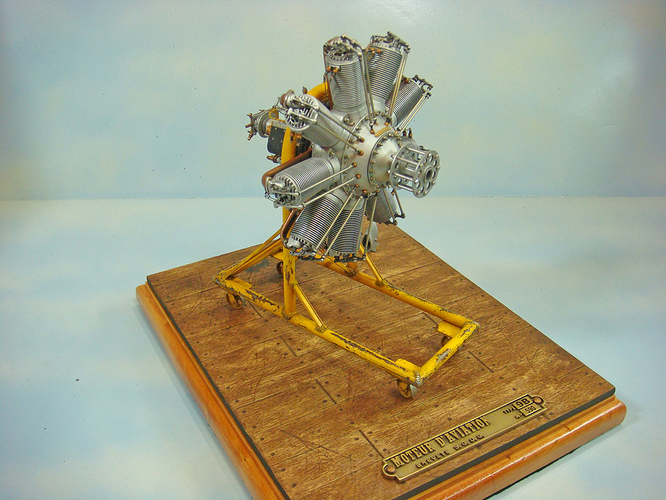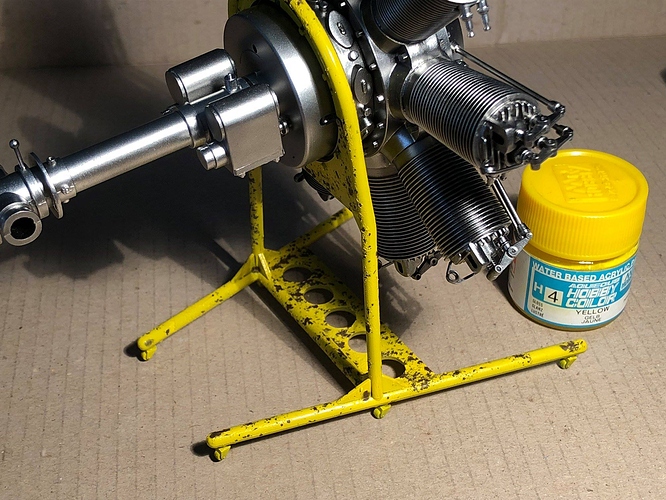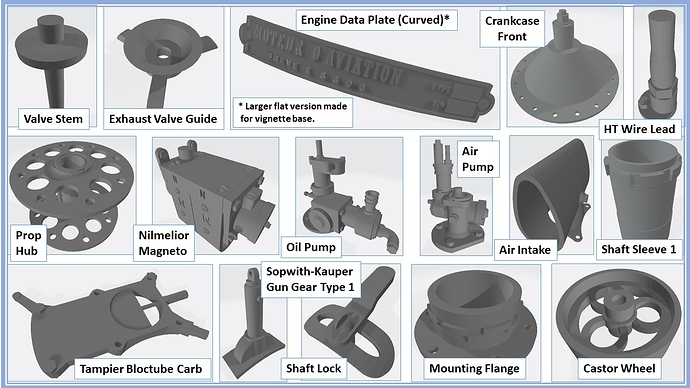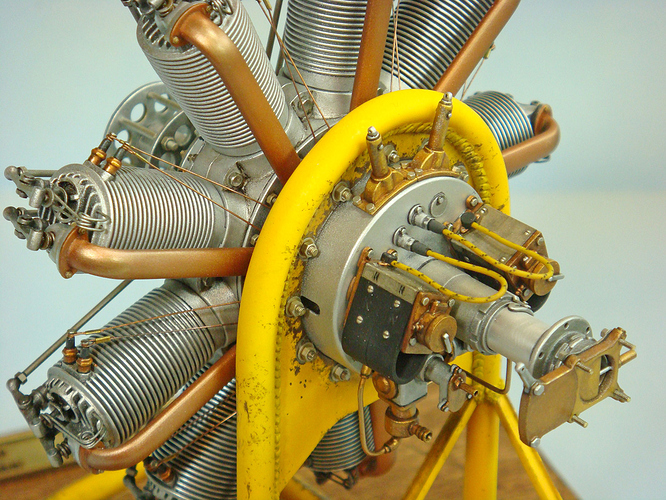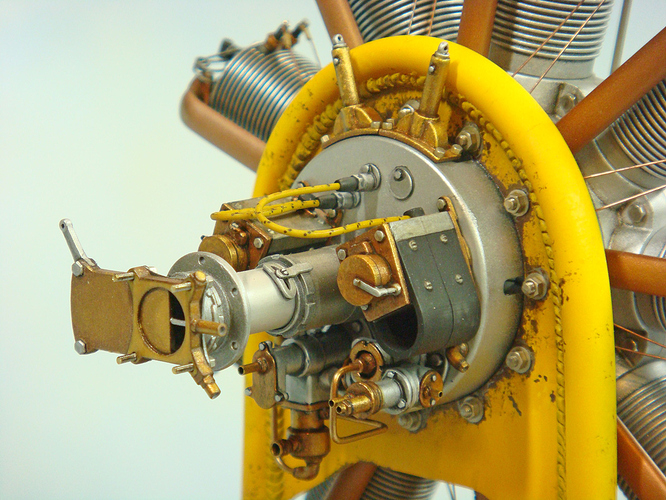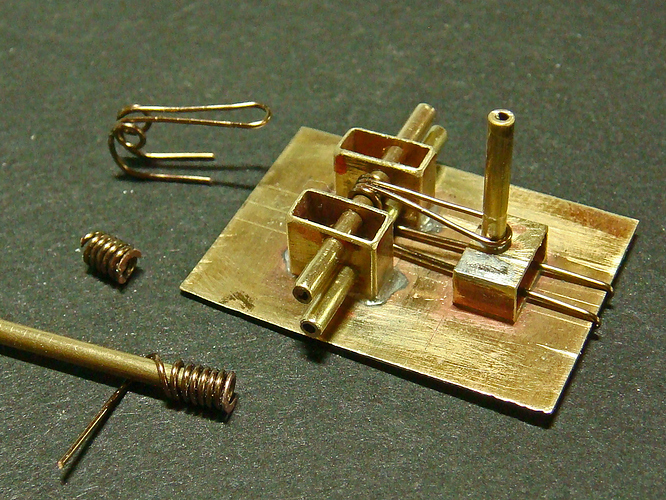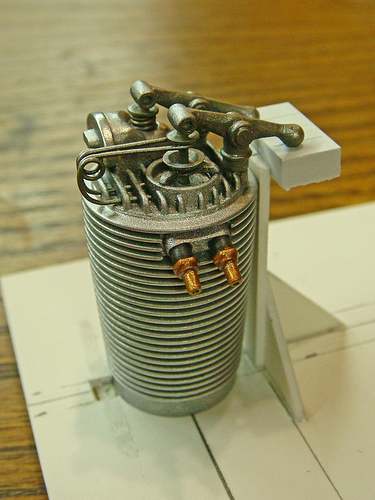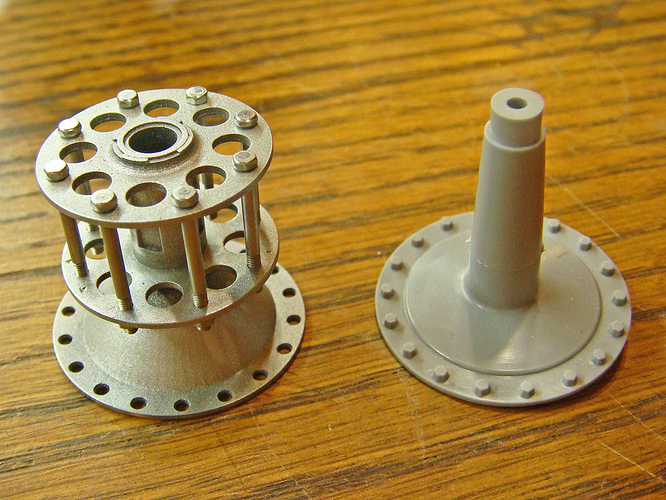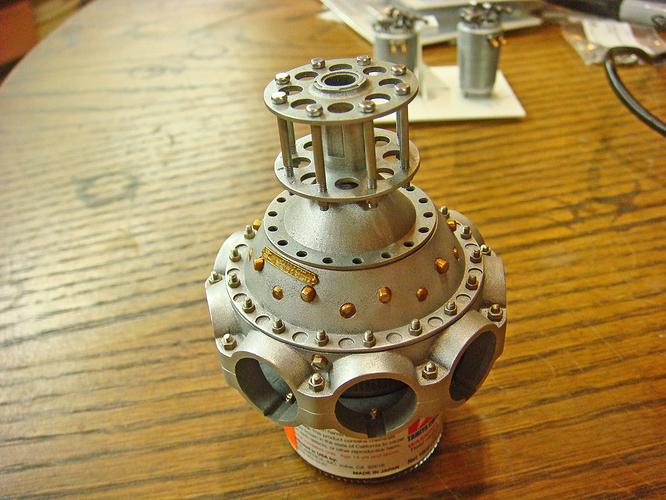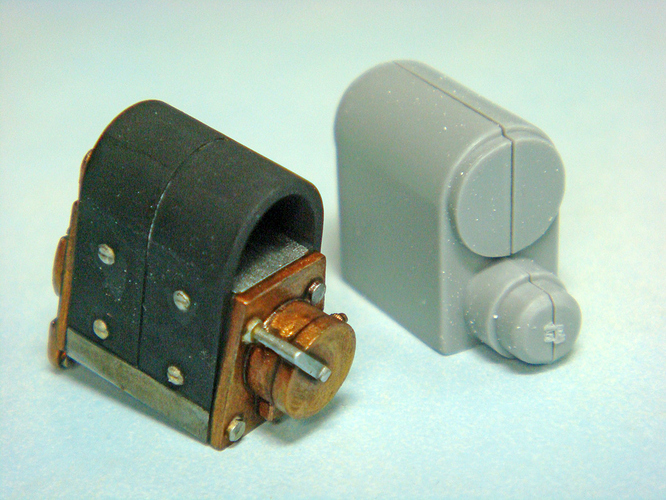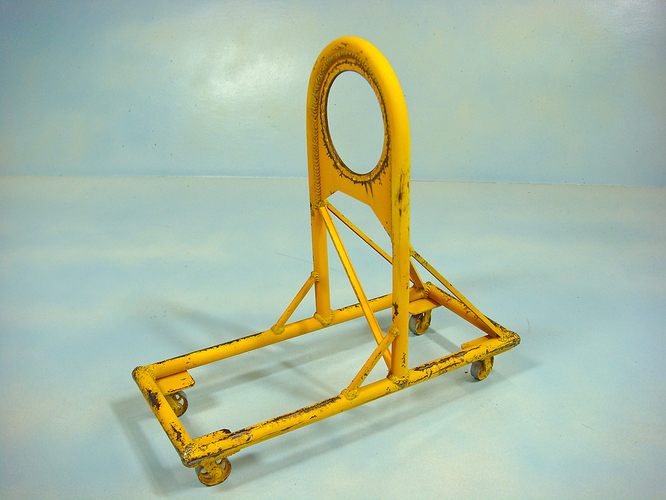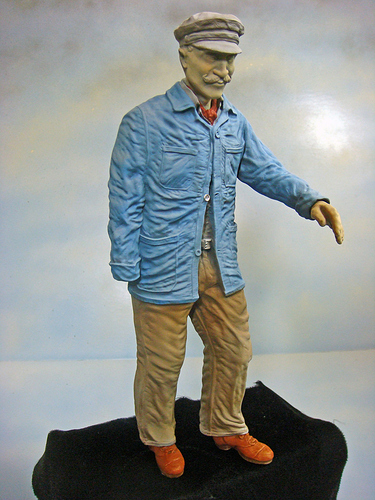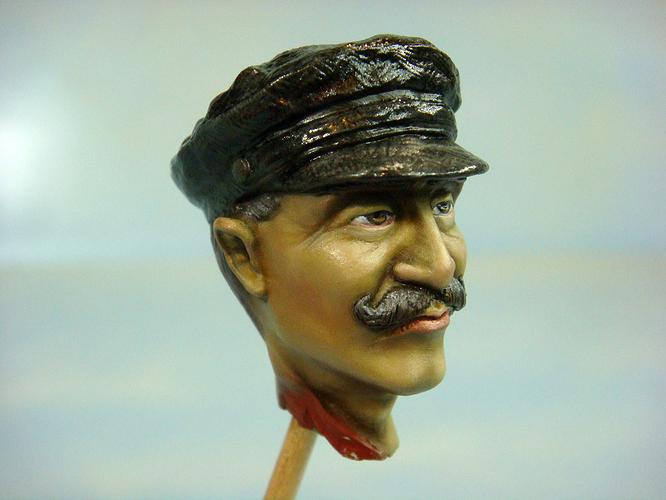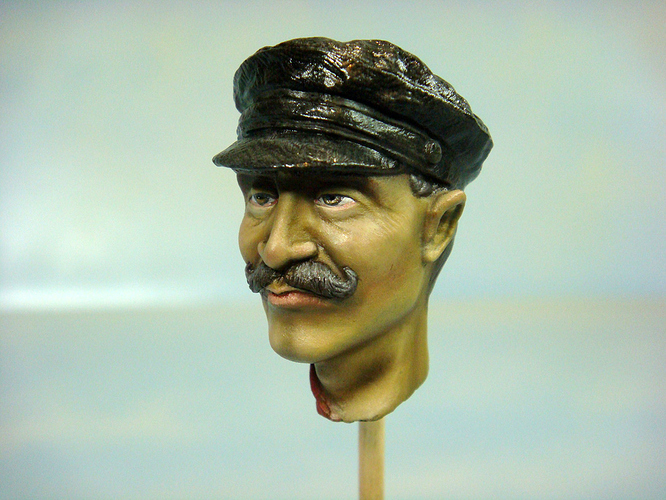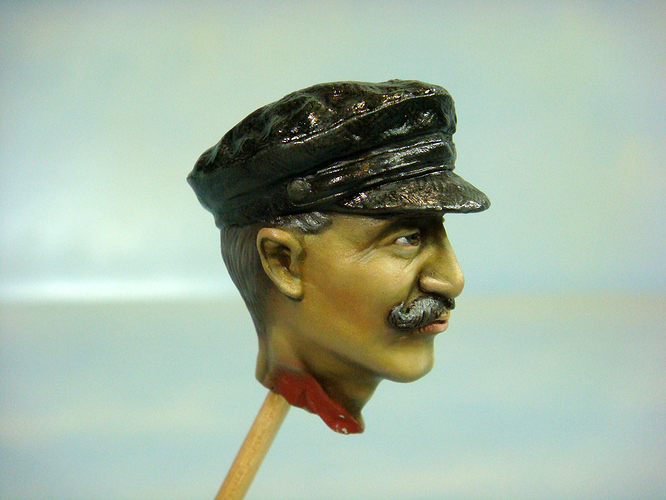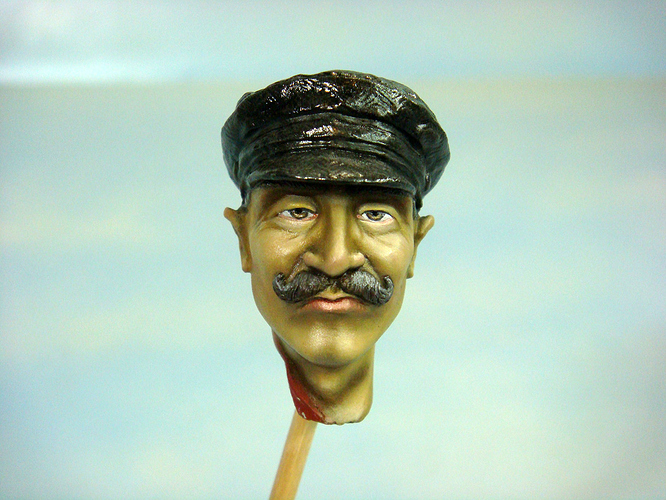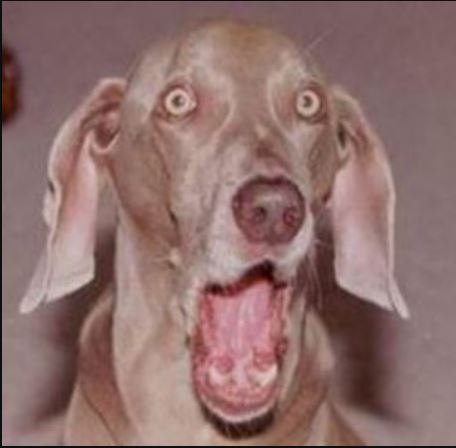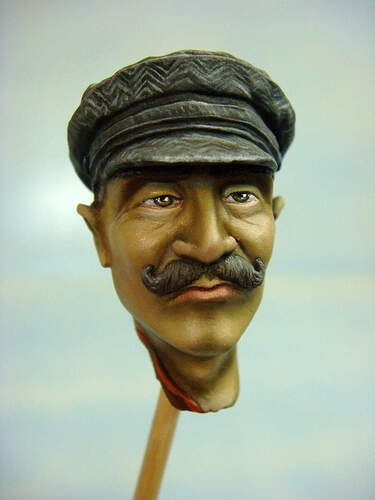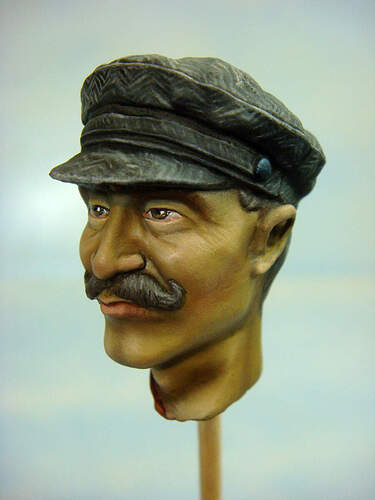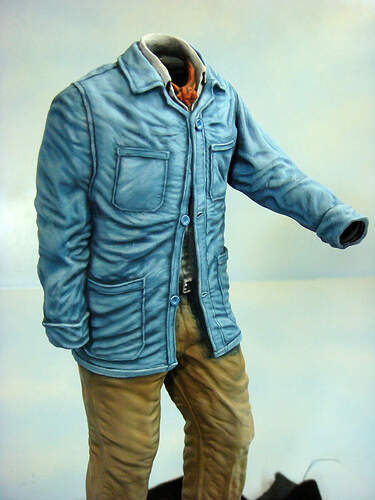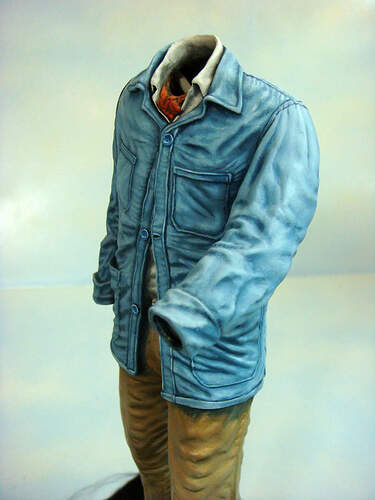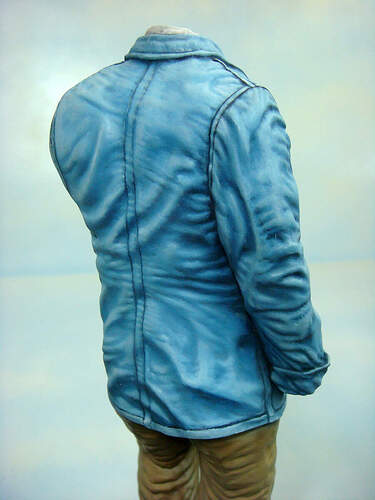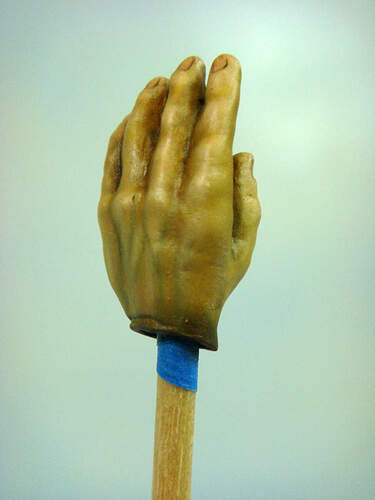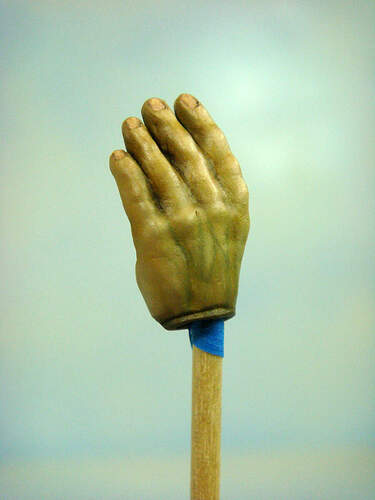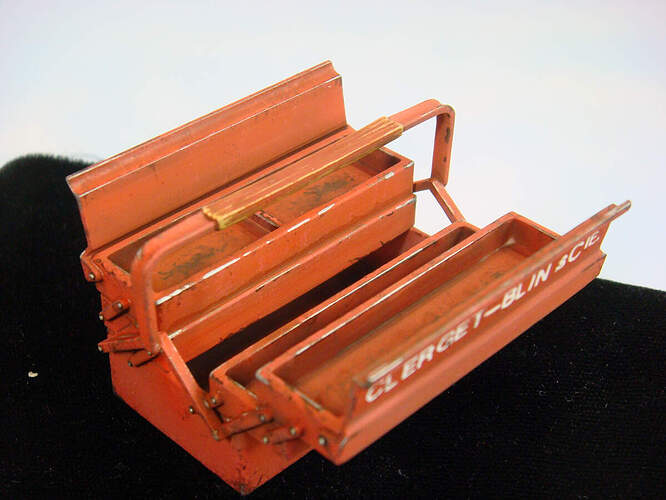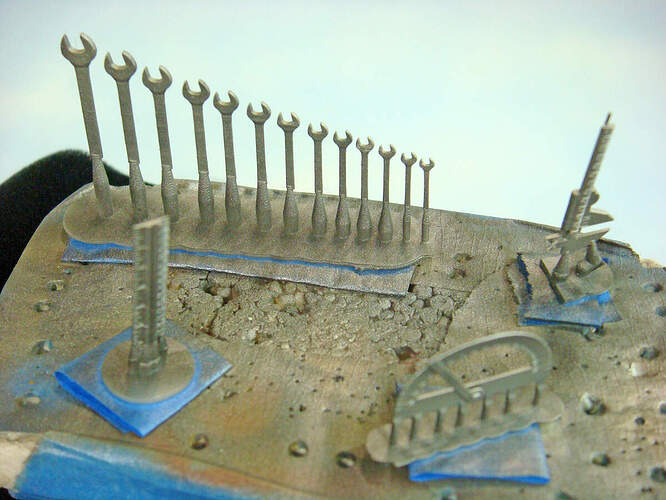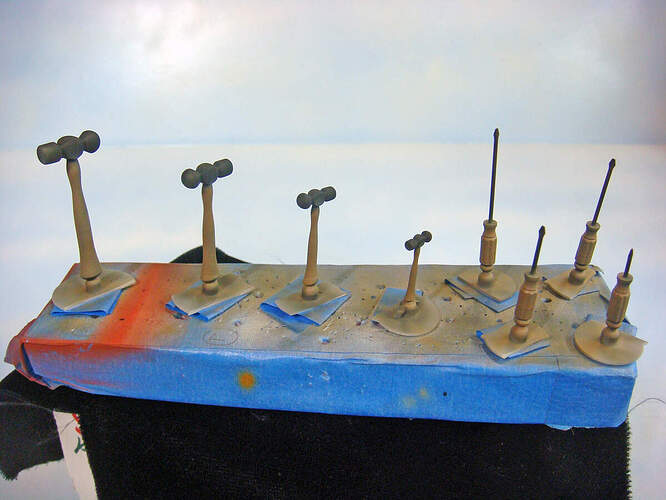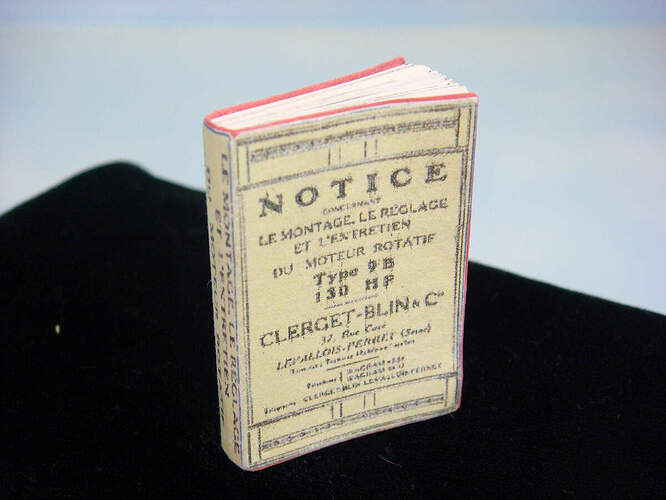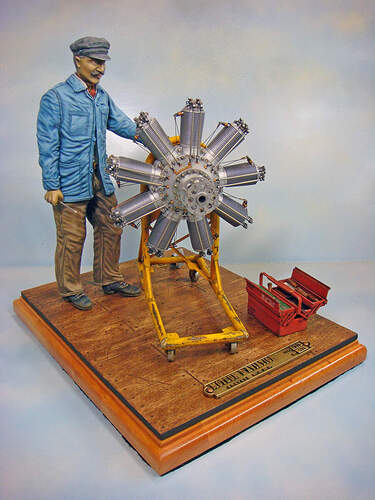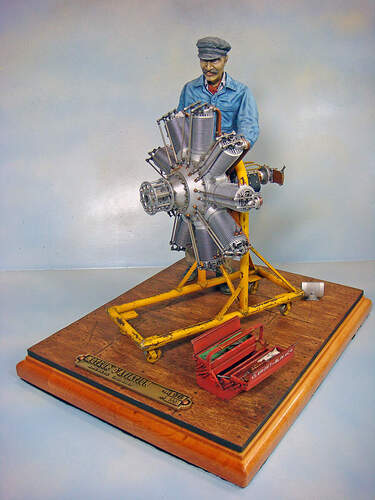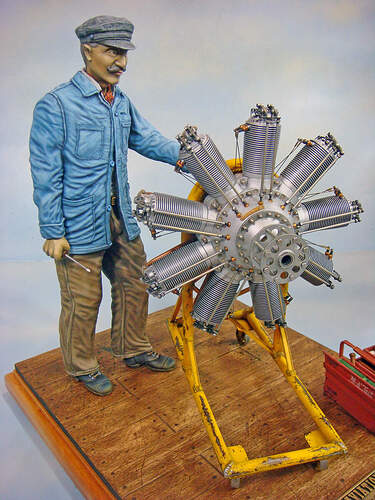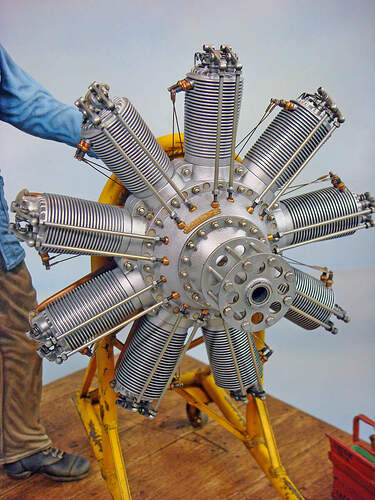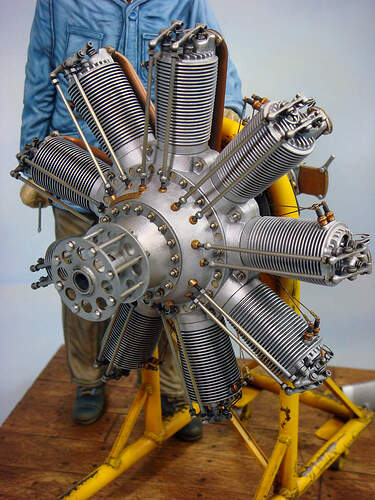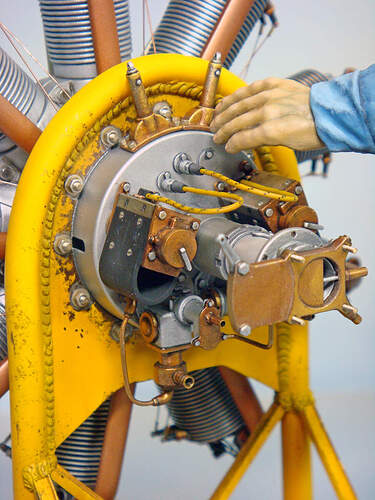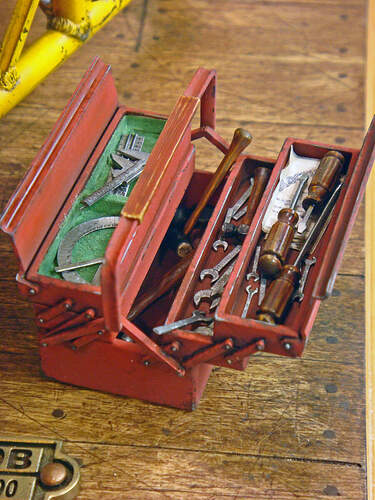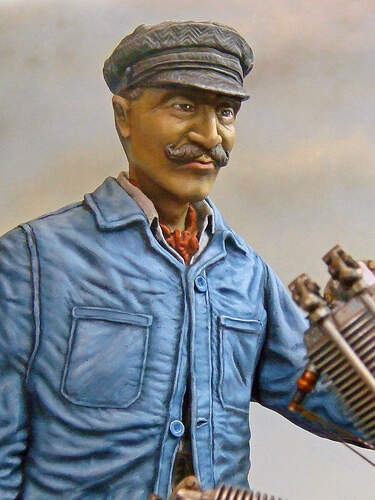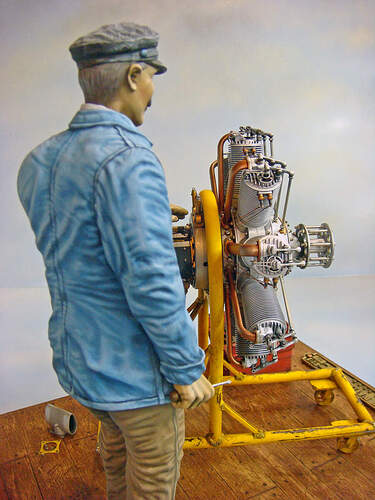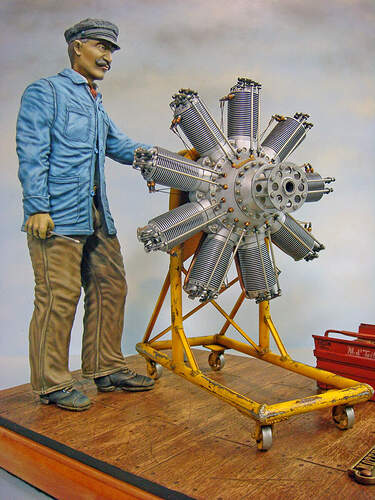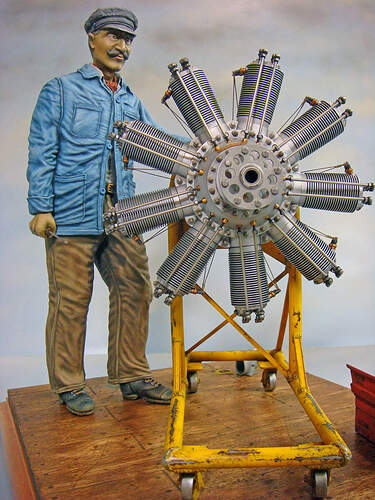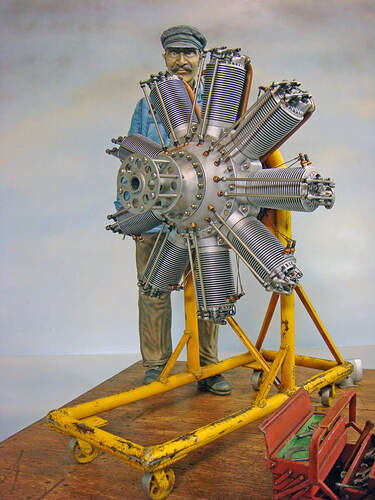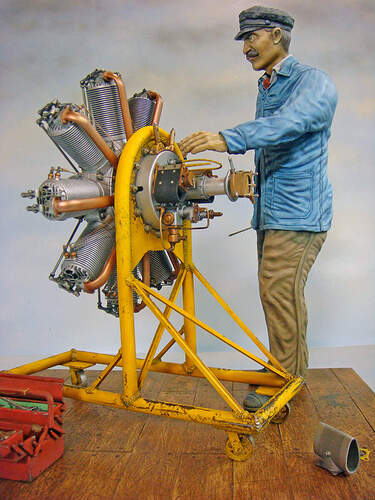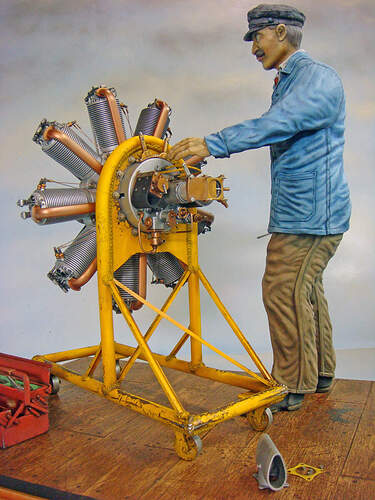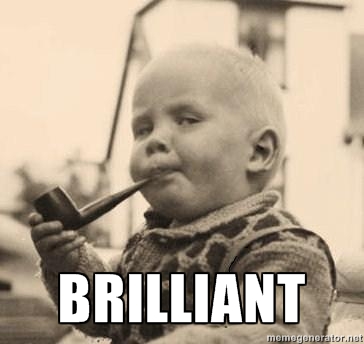So, I probably would have posted this part of the project in the Historicus Forma, but as the new site is still under development, there’s no sub-forum there for actual works.
This is the 1:8 scale vintage French factory worker that I’m adding to my Clerget engine vignette. It’s main purpose is to help the viewer appreciate the scale and the size of the prototype. The figure was 3D sculpted and printed by “Holden8702”.
(“Holden8702” is the FaceBook handle of my friend who operates “Panzers vs. Tanks” 3D printing. He has a Shapeways shop, but most of his recent work can be found on his FB page. If you’re interested in this figure or have some other 3D printing needs, look him up. Highly recommended!)
Here’s the figure partially assembled, cleaned up, and undercoated. This might be called a “color sketch” or “defining the volumes.” Basically, I’ve airbrushed on a gray primer followed by airbrushed black and white pre-shading. The pre-shading was followed by airbrushed basic colors sprayed on in thin, semi-transparent layers to retain the general shadows and highlights.
The face received some work to enhance the shape of the mouth, mustache, hair, and forehead (after undercutting the bill of the hat).
I also made a few other small changes like making new jacket buttons, sharpening the seam details, and filling in some of the wrinkles. This is the final composition or arrangement of the figure and engine. I have some tools and a tool box that I might add later.
At this point, I’m now doing the finish painting with artist oils, starting with the face and head.
The wool, tweed hat has just been undercoated with black here. There’s still a lot more work to do on that. I’ve never painted a tweed texture, so this will require some experimentation.
The basic skin flesh tone was mixed up using the three primary colors, this time, cadmium red, medium cadmium yellow and Prussian blue. Once I was happy with the basic color, red and blue were mixed to make a dark, reddish violet, and that was added to the basic flesh to create the shadow shades. Titanium white was mixed with the flesh for the highlights. All very basic and simple color mixing.
I did bring in a couple of different reds later, alizarin crimson and Indian red, to “warm up” the flesh colors here and there. I also used a touch of Payne’s gray here and there, too.
I may still do some small touchups and additions to the face, but for now, I’m satisfied with what I have.
Now for that tweed hat…
